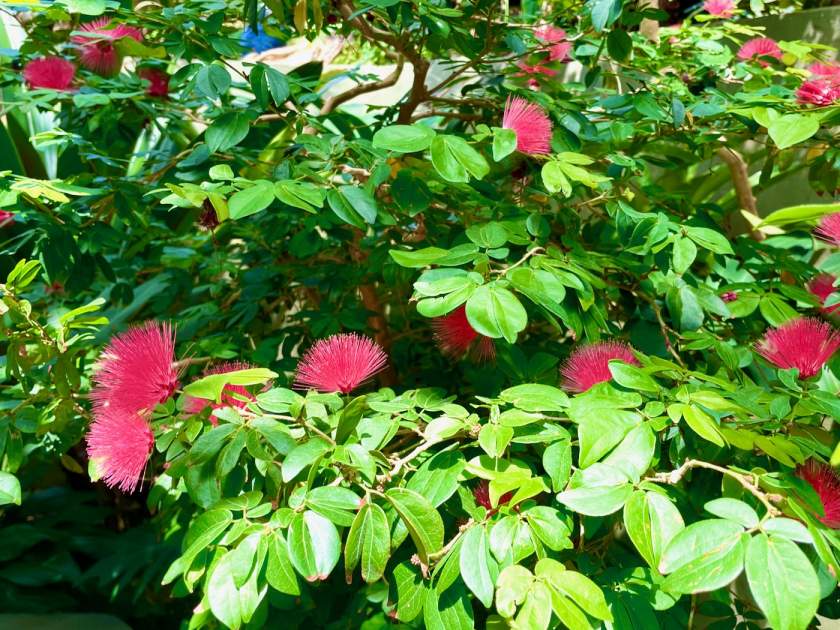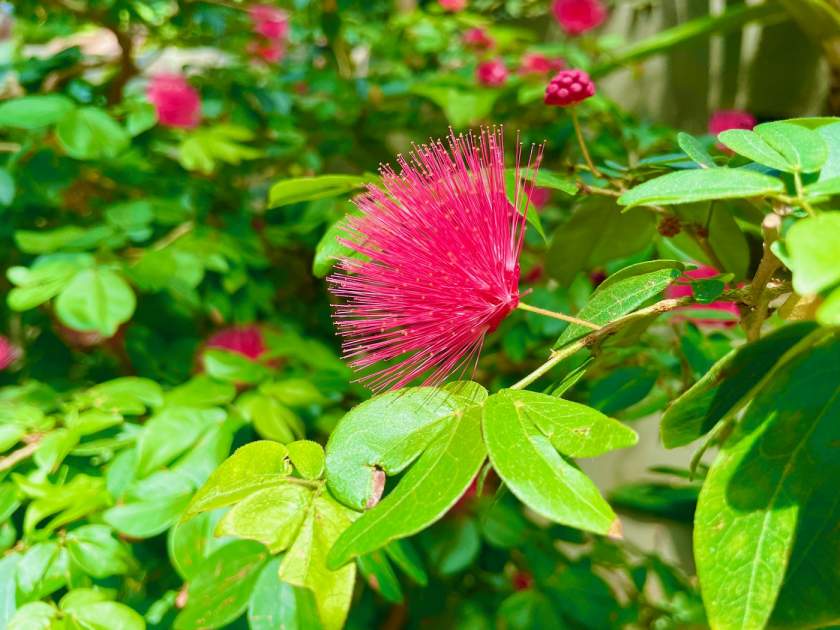Discover the Enchanting Beauty of Calliandra emarginata, the Dwarf Powderpuff
Background: Family and Native Origin Calliandra emarginata, commonly known as Dwarf Powderpuff, belongs to the Fabaceae family. With approximately two hundred species distributed across warm regions of North and South America, Asia, and Madagascar, the Calliandra genus is known for its small, clustered flowers. Native to Mexico and Central America, Calliandra emarginata delights with its rounded clusters of pink to red flowers, measuring about one and a half to two inches in diameter. The plant blooms over an extended season on new growth, showcasing its vibrant and colorful stamens. Seed pods resembling beans follow the flowers’ display.
Characteristics of Leaves and Flowers
Calliandra emarginata is a captivating ever-blooming plant. As a dwarf shrub, it can be pruned and maintained at a smaller size, reaching heights of 3-4 feet. The deep pink to almost red powderpuff-like flowers adorn the plant with their delicate charm. The intensity of the flower color may vary depending on the amount of light the plant receives. Notably, the leaves of Calliandra emarginata fold inward in the evening or under low light conditions, which should not be mistaken as a sign of inadequate watering.
The flowering season for Calliandra emarginata, or Dwarf Powderpuff, typically extends throughout the year, with intermittent resting periods. While it produces flowers consistently, it may take a break from blooming during midwinter. The plant’s stunning blooms, measuring approximately 1 to 2 inches in diameter, grace the tree-like structure for about 6 to 8 weeks at a time. The vibrant display of powderpuff-like flowers adds a touch of charm and color to the garden, making it a noteworthy feature of this delightful plant.
Cultivation of Calliandra emarginata
Sunlight: Full Sun to Part Shade Calliandra emarginata thrives in a location that receives full sun to partial shade. It adapts well to different light conditions, making it suitable for various garden settings.
Watering: Drought-Tolerant but Responsive to Irrigation This plant exhibits medium watering requirements and responds well to slight drying out between watering sessions. In the winter, allowing the soil to dry out more promotes a healthier root system, while keeping the soil consistently moist during the summer months can be beneficial.
Soil: Adaptable but Must be Well-Drained Calliandra emarginata shows adaptability to various soil types, but it must be grown in well-drained soil. Enhancing the soil with organic matter and incorporating components like bark, perlite, or sand can improve drainage and provide an optimal growing medium for the plant.
Pest and Disease Management Calliandra emarginata is generally hardy and resistant to pests and diseases. However, it is important to monitor the plant for any signs of powdery mildew or rust. If detected, appropriate fungicides should be applied to prevent further damage and ensure the plant’s health.
Propagation of Calliandra emarginata
Cutting Propagation and Seed Propagation Calliandra emarginata can be propagated through two primary methods: cutting propagation and seed propagation.
Cutting Propagation:
- Take cuttings measuring 4-6 inches from non-flowering shoots in late summer.
- Plant the cuttings in moist soil and maintain high humidity levels to promote successful root formation.
- When transplanting newly rooted cuttings, handle them with care as their delicate roots are more susceptible to breakage.
Seed Propagation:
- Collect seeds from the plant’s seed pods.
- Plant the seeds in a suitable potting mix and provide adequate moisture and warmth.
- Germination of seeds typically occurs within a reasonable time frame.
Additional Care Tips and Observations
Calliandra emarginata is a surprisingly easy plant to grow, offering immense satisfaction. Pruning helps maintain dense growth and allows for shaping according to personal preference. Re-pot Calliandra emarginata when it becomes root-bound. This versatile plant can be trained as a bonsai, grown as a shrub on a windowsill, or even shaped into a small tree. Its attractive foliage, consisting of light green kidney-shaped leaflets, complements the spectacular and never-ending array of vibrant flowers. The plant’s new growth exhibits a striking orange color, enhancing its overall beauty and appeal.
With its eye-catching blooms, resilient nature, and ease of care, Calliandra emarginata is an exquisite addition to any garden. Whether you showcase it as a focal point or integrate it into a vibrant landscape, this captivating plant is sure to bring joy and admiration with its year-round flowering and delightful foliage.


